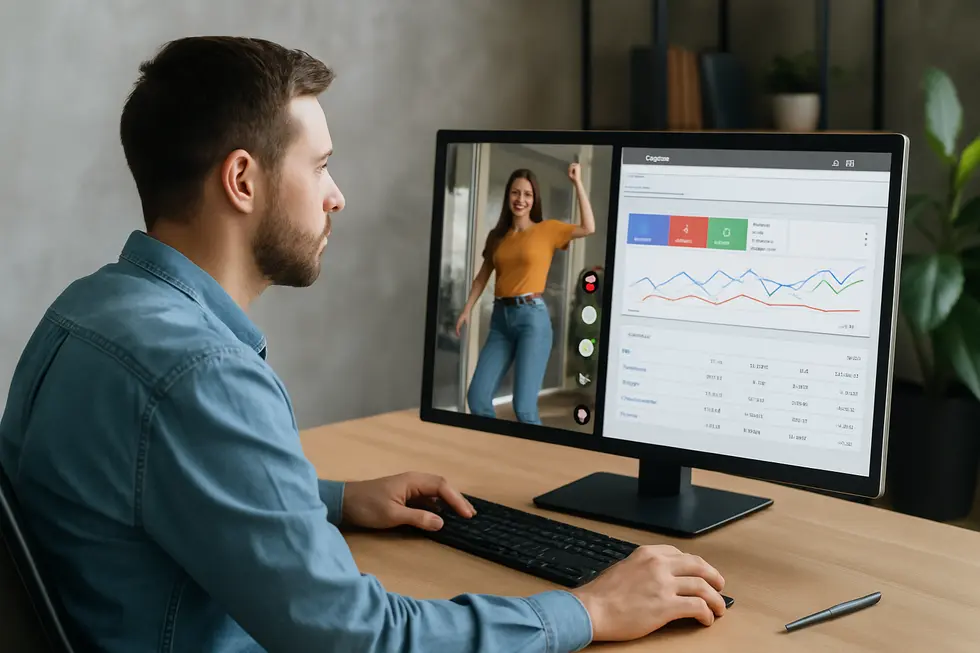Choosing the right advertising platform is crucial for small businesses aiming to maximize return on investment. TikTok Ads and Google Ads offer distinct advantages, each suited to different marketing strategies. Understanding their unique features and how they align with your goals can significantly impact your campaign effectiveness. Additionally, incorporating effective Pay Per Click Management practices ensures your advertising dollars are well spent. This article compares TikTok Ads and Google Ads in depth, providing small business owners with the insights needed to make an informed decision that drives growth.
Analyzing Audience and Content Strategies for TikTok and Google Ads

TikTok and Google Ads serve distinct audiences, each with unique content consumption patterns that influence ad strategy. Understanding these differences enables small business owners to craft more effective campaigns by leveraging each platform’s strengths.
TikTok’s user base skews younger, predominantly composed of millennials and Gen Z, who favor short-form, highly engaging videos that emphasize entertainment and authenticity. This demographic responds well to creative, trend-driven content that feels organic rather than overtly commercial. When using TikTok Ads, businesses can capitalize on this by creating content that aligns with viral trends, challenges, or user-generated content, promoting a sense of community and relatability. The platform offers diverse ad formats, including in-feed videos, branded hashtag challenges, and influencer collaborations, which support immersive storytelling.
Conversely, Google Ads reach a broader, more diverse audience actively searching for specific products or services. The platform’s strength lies in intent-driven targeting, allowing advertisers to connect with users at various stages of their buying journey. Google’s ad formats include search ads, display banners, video ads, and shopping ads, each suited for different content strategies. Search ads enable precise keyword targeting, which is ideal for capturing high-intent customers actively seeking solutions. Display and video ads offer visually rich content, allowing businesses to educate or showcase their offerings to users browsing related content. Content personalization is highly advanced on Google, with options to tailor ads based on search queries, geographic location, device, and user behavior.
Effective targeting options distinguish both platforms. TikTok provides detailed demographic and interest-based targeting, enabling small businesses to reach niche audiences based on age, gender, location, and viewing habits. Its algorithm favors creative content that resonates emotionally or entertains, demanding a more organic approach to ad creation. Meanwhile, Google’s targeting options include keyword selection, audience affinity, custom intent audiences, remarketing, and geographic parameters. These tools allow for granular audience segmentation, ensuring that ads are shown to users with a predisposition to convert.
Content personalization also varies significantly. TikTok prioritizes short, engaging videos that blend seamlessly into users’ feeds, emphasizing entertainment and authenticity. Ads must be swift and visually captivating to capture attention within seconds. Google’s platform supports diverse formats, from text snippets to rich media, enabling more detailed messaging. Personalization relies heavily on data-driven insights and user intent signals, allowing small businesses to customize ad content based on specific user searches and browsing histories.
To optimize campaign performance, pay-per-click (PPC) management must be tailored to each platform’s nuances. On TikTok, effective management involves continuously monitoring creative performance, leveraging trending sounds or themes, and adjusting target audiences based on engagement metrics. For Google Ads, focus should be on refining keyword strategies, adjusting bids for high-performing terms, and optimizing landing pages to improve Quality Score. Using comprehensive conversion tracking and A/B testing can further fine-tune these campaigns, ensuring that advertising spend translates into tangible results.
Ultimately, small business owners should assess their target demographics, content style, and marketing goals when choosing between TikTok and Google Ads. Both platforms offer powerful audiences and sophisticated targeting, but success hinges on tailoring content and management strategies to meet each platform’s unique requirements. Incorporating insights from detailed audience analysis and maintaining active PPC optimization will ensure campaigns are not only engaging but also cost-effective, delivering maximum return on investment.
Evaluating ROI and Cost-Effectiveness in Paid Advertising

When small business owners allocate budgets to online advertising, understanding the relative ROI and cost-efficiency of different platforms becomes crucial. TikTok Ads often present a unique cost structure compared to Google Ads, largely due to their differing bidding mechanisms and ad formats. TikTok operates primarily on an auction system where bids are set for specific audience segments, with costs fluctuating based on targeting precision and content relevance. Conversely, Google Ads, especially on the Search Network, typically employ a pay-per-click model with standardized bidding strategies that can be fine-tuned to optimize for conversions.
The potential ROI from each platform depends heavily on how well campaigns are managed and aligned with business goals. TikTok’s visually engaging, trend-driven content can generate high engagement and brand awareness, leading to increased attribution value over time. Google Ads, by targeting intent-based searches, often yield more immediate conversions but may require higher per-click bids, especially competitive keywords.
A key factor influencing ad spend efficiency is Pay Per Click Management. Effective management encompasses strategic bidding, ad optimization, and robust tracking practices. Bidding strategies, such as automated bidding or manual bids, can significantly impact cost control and ROI. Small business owners who leverage bid management tools or work with PPC specialists can avoid overspending on low-performing keywords or segments.
Ad optimization involves testing different ad copies, images, and calls-to-action to enhance click-through rates and conversion probabilities. Continuous split testing and iterative improvements ensure that budgets are directed towards the highest performing ads.
Tracking conversions accurately is fundamental in evaluating true ROI. Small businesses should implement comprehensive analytics to measure not only direct sales but also other valuable actions like sign-ups, inquiries, or time spent on their website. Linking these metrics back to specific campaigns allows for better budget allocations.
Choosing the right platform hinges on aligning advertising efforts with broader business objectives. If brand awareness and engagement within a younger demographic are priorities, TikTok can deliver meaningful reach at a relatively lower cost per impression. Conversely, if immediate sales from intent-driven searches are essential, Google Ads may offer a more direct path to ROI.
In sum, a thorough understanding of each platform’s cost structures and the strategic application of PPC management techniques can maximize profitability while preventing wasteful ad spend. Small business owners should regularly review campaign data, refine bidding strategies, and adapt content to ensure their advertising dollars drive measurable results. For targeted ad management assistance, exploring resources like PPC Management Solutions can provide valuable insights into optimizing campaigns for greater ROI.
Final words
Selecting between TikTok Ads and Google Ads depends on your target audience, content approach, and budget considerations. Effective Pay Per Click Management remains essential regardless of the platform, helping optimize ad spend and improve conversion rates. Carefully analyzing these factors allows small business owners to choose a platform aligned with their growth objectives, ensuring marketing dollars are well-invested for maximum impact.
Our team of experts will work diligently to ensure your pay per click marketing campaign is properly executed. This cost-effective approach is designed to increase quality traffic to your website and boost your profits.
Learn more: https://payperclickhouston.com/contact
About us
Houston Pay Per Click (PPC) specializes in Google Ads expert services, internet advertising, and search engine marketing for small businesses. We provide comprehensive campaign management, local SEO, and optimization services to attract new customers, lower your cost per click (CPC), and track results effectively. Let us help you maximize your advertising ROI through tailored Pay Per Click Management.







